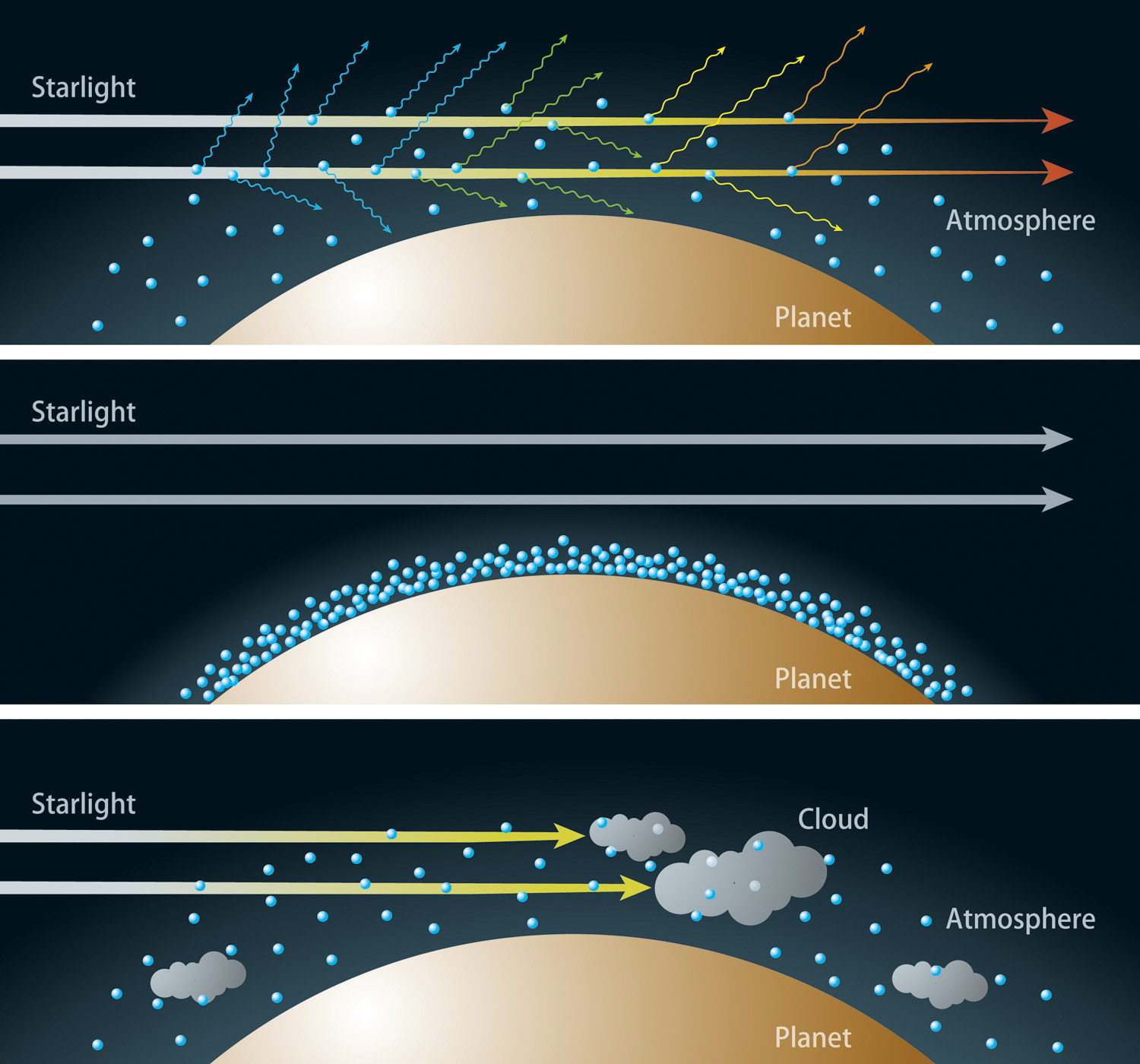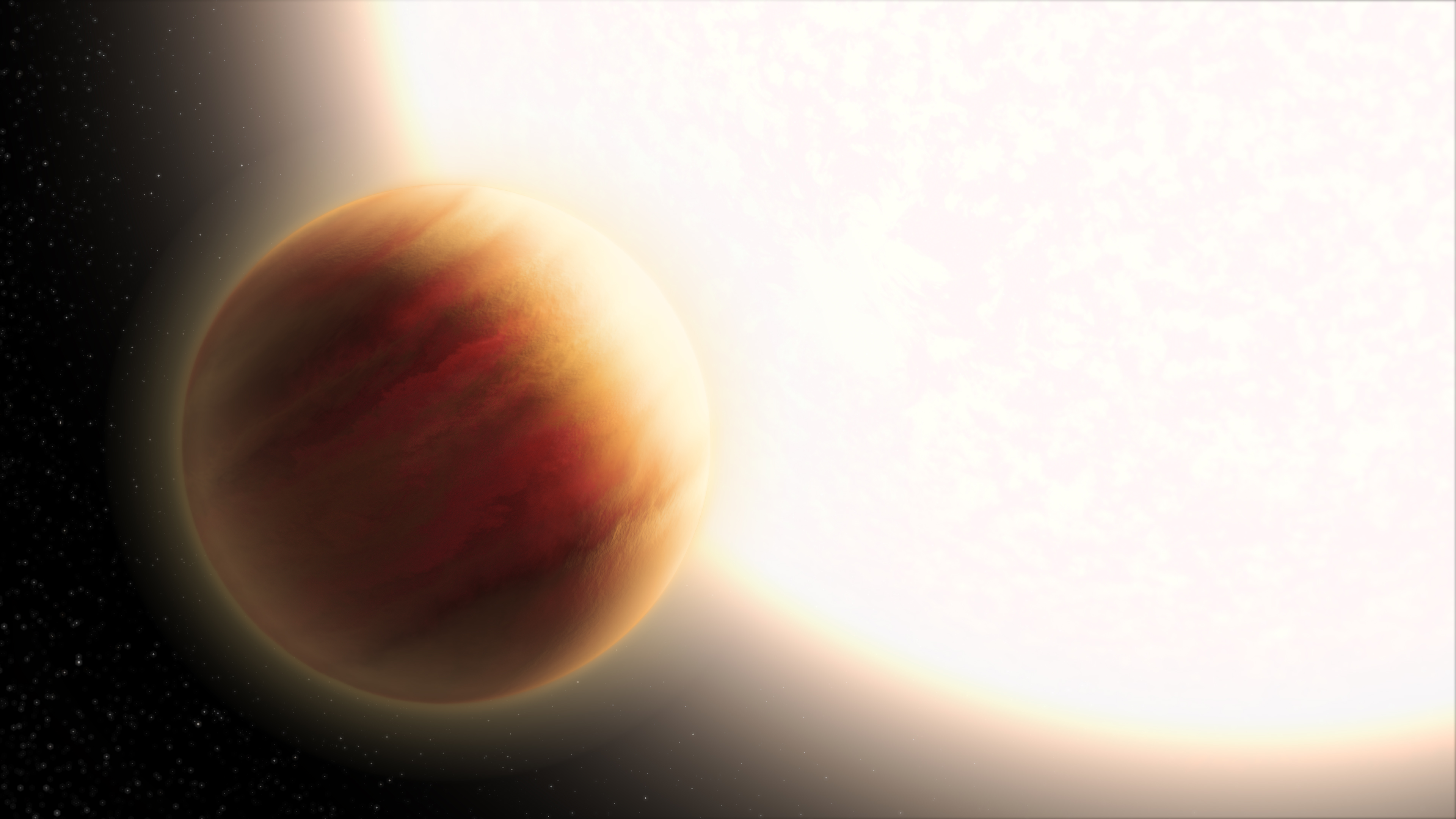Press Release
First Exoplanet Study from Johns Hopkins APL Leaves Researchers Stumped

Credit: National Astronomical Observatory of Japan
In the first exoplanet study from the Johns Hopkins Applied Physics Laboratory (APL) in Laurel, Maryland, researchers found that the cloudy atmosphere of WASP-79b, an exoplanet from a solar system nearly 800 light-years away, is almost transparent to blue light, leaving it with a yellow-tinged sky. That finding, reported earlier this year in the Astronomical Journal, goes against physical models and has left astronomers scratching their heads.
“We’re really not sure what’s going on here,” said APL planetary scientist Kristin Showalter Sotzen, who led the study. “But if similar features are found on other such worlds, it’s going to provoke questions about current theories on atmospheric processes and evolution.”
Researchers have become increasingly interested in studying the atmospheres of exoplanets that orbit stars in other solar systems, including planets called “hot Jupiters.” They’re steaming, Jupiter-sized balls of gas that orbit uncomfortably close to their parent stars.
NASA’s Panchromatic Exoplanet Treasury program aims to compare the atmospheres of 20 planets — ranging in size from Earth to Jupiter — in ultraviolet, visible and infrared light. NASA’s anticipated James Webb Space Telescope (JWST) will also provide detailed spectra over a broader range of wavelengths.
WASP-79b, one of the largest hot Jupiters ever discovered at twice the size of Jupiter, was selected to be one of JWST’s first targets, part of the Early Release Science Program. It orbits its parent star at about the same distance that Mercury orbits the Sun. That causes it to puff out like a hot air balloon as temperatures in its atmosphere soar to a sizzling 3,000 degrees Fahrenheit (1,600 degrees Celsius) — hot enough to melt iron.
Although hellish, these conditions provide researchers with a relatively easy way to determine what molecules zip around an exoplanet’s atmosphere, especially water, and even if it has cloudy, hazy or clear skies.
As light passes through an atmosphere, molecules absorb certain wavelengths of light or, in the case of blue and violet light, scatter it in a process called Rayleigh scattering, the same process that creates our cerulean blue skies. From the remaining light that does emerge, researchers can tell if molecules such as methane, nitrogen and oxygen are present, and even if clouds or hazes are in the sky.
“We’re trying to look at a lot of different hot Jupiters because they’re easier to analyze,” Sotzen said. “What we learn from them will help us make predictions about the atmospheres of other exoplanets, like whether they have clouds or not.”
That information, she says, could in turn help determine a planet’s habitability.
“If you have a haze around a planet, for example, it could provide a cooling or warming effect for a planet that’s maybe on the edge of the habitable zone,” she said.
Predicting whether a planet has clouds or not is a bit tricky, though. Atmospheres are constantly in a balancing act between gravity trying to pull them down and temperature trying to drive them out. WASP-79b was particularly interesting because it had characteristics somewhere in between — it’s extremely hot, but its average gravity is about the same as Earth’s, offering researchers a chance to see how a planet’s temperature, gravity and cloudiness all connect.
Using the Magellan Observatory in Chile as well as data from NASA’s Hubble and Spitzer telescopes, they found clear signs of water in the atmosphere of WASP-79b, but blue light wasn’t scattered as expected from the planet’s bloated atmosphere. Instead, it passed through unobstructed. Independent observations from NASA’s Transiting Exoplanet Survey Satellite (TESS) indicate confirmation of the result.
Sotzen said she showed the findings to multiple colleagues. Their reaction was always, “That’s weird,” she said. The team suspects some unknown atmospheric process is happening that they’re not accounting for in models. The only way to resolve that is to look for more planets like WASP-79b.
Kathleen Mandt, a planetary scientist and the chief scientist for exoplanets at APL, sees the finding as providing one more piece in a greater puzzle about giant planets like hot Jupiters in general.
“In our own solar system, we don’t know how much solid material contributed to the formation of the giant planets, how quickly they formed and by what processes, and even more importantly how they migrated after forming,” Mandt said. “As we obtain new results about exoplanets like WASP-79b, we’re collecting critical information about the formation of giant planets around other stars to better understand fundamental processes of planet formation and evolution.”
